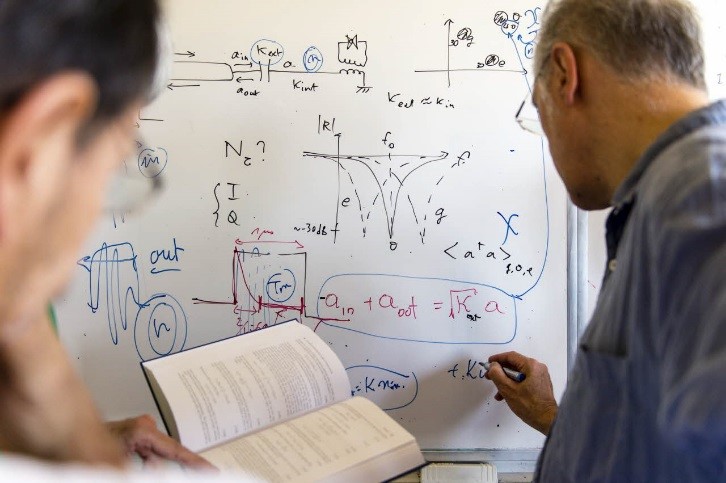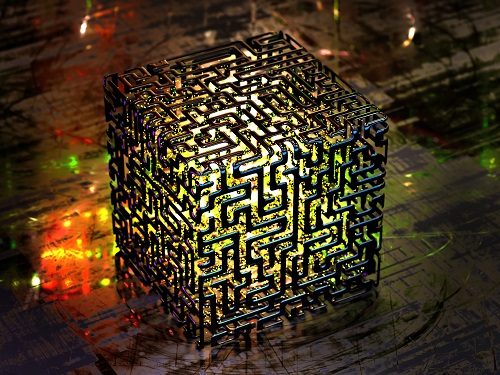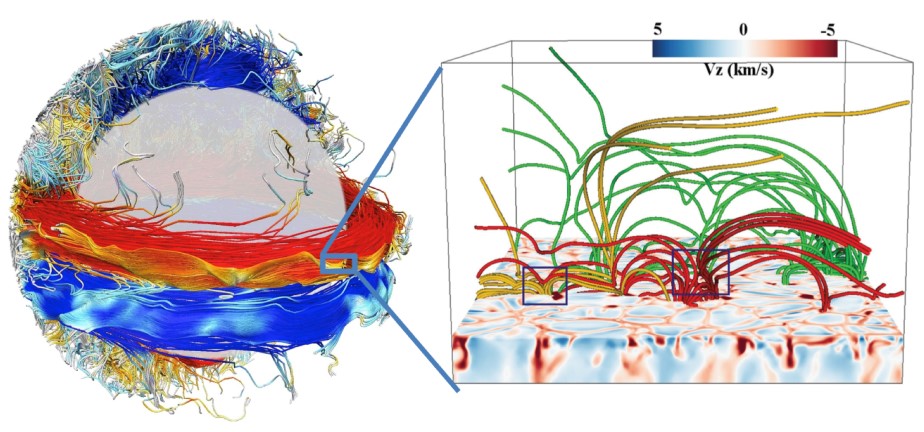The European Research Council (ERC) has just published the list of 27 projects it selected out of the 299 submitted to the ERC Synergy 2018 call for projects. Among them, the CEA’s laboratories have 3 winners. In order to ensure Europe's long-term competitiveness, the ERC's mission is to support world-class frontier research of excellence through highly competitive calls for projects. With a budget of 250 million euros, the “Synergy” category supports two to four researchers and their teams from different laboratories to jointly carry out an ambitious research project over a six-year period. With 35 million euros in European subsidies granted to these three projects, this is a strong recognition of the expertise of the CEA and its partners within the European Research Area.
From the quantum world to the stars, three new projects…
► ReNewQuantum (for Recursive and Exact New Quantum)[1]

Analyzing the experimental results obtained on the first Andreev quantum bit. © P.Stroppa/CEA
While quantum physics is omnipresent in most recent science and technology, quantum theory needs mathematical tools. These are currently somewhat lacking, in particular for complex quantum systems and approximation methods. This is why the ReNewQuantum project is aiming to develop a mathematical method of semi-classical approximation [2]
of quantum theories, which could benefit the entire scientific community, whether it is working on chaotic systems, quantum field theories or string theory. Building on concrete success already achieved in some quantum systems, ReNewQuantum proposes using modern geometry to reinterpret quantum theories and, in particular, to reinterpret semi-classical corrections as geometric objects. The project aims for a better understanding of the entire set of corrections, which would enable more effective computing. The objective is therefore to generalize these geometric methods to create a mathematical applicable to almost all quantum theories.
► QuCube (for 3D integration technology for silicon spin qubits)[3]

Applied to the field of computing, quantum physics could revolutionize high performance computing, theoretically solving problems that conventional supercomputers are unable to solve. All major industries (transport, finance, energy, chemistry, pharmaceuticals, etc.) could benefit from quantum computing. In practice, this research has produced the first proofs of concept for quantum bits – the quantum equivalent of the most basic bit in elementary computing – but it is not yet certain that these first demonstrations can be reproduced on a large scale. In this context, the QuCube project aims to develop a quantum processor based on silicon, the base material already used in what is known as classical electronics. The processor will support at least one hundred quantum bits, or qubits, currently a first in terms of qubit numbers. The success of the project requires technological breakthroughs, including architecture implementation, the control of quantum bit variability or the implementation of quantum error correction processes, and finally a thorough understanding of conventional control electronics, for example on issues related to thermal dissipation.
► Whole Sun (for The Whole Sun Project: Untangling the complex physical mechanisms behind our eruptive magnetic star and its twins)[4]
Our Sun is an active magnetic star that, due to its variable and eruptive behavior, has a direct impact on our technological society. However, despite decades of research, many questions remain unanswered. While this research into solar physics has so far focused on either the structure and dynamics of the inside of the Sun or, separately, on the surface and atmosphere of the Sun, the Whole Sun project aims to understand the Sun as a whole by consolidating research into these two major solar regions. A detailed study of the (thermo) dynamic and magnetic interaction between the deep solar interior, the surface of the Sun and the highly stratified atmosphere is absolutely vital if we hope to tackle the fundamental problems of solar physics (such as the origin of sunspots and the 11-year cycle; the presence of a warm atmosphere, etc.). In conjunction with the development of what is known as ‘exascale’ computers [5], Whole Sun will deliver the most advanced multi-resolution solar code in order to jointly address global and local, macrophysical and microphysical aspects of solar dynamics. Finally, extending this integrated approach led by Whole Sun to solar analogue stars that have different rotational speeds and chemical compositions will also provide a deeper understanding of stellar magnetism and activity.

Left: simulation of the intense magnetic fields generated inside the Sun by dynamo effect. Right: simulation of internal magnetic fields emerging in the solar atmosphere. © CEA/University of Oslo
...join the CEA's many other ERC projects
Since its launch in 2007, ERC has become a label for all researchers seeking independence and a real leadership role in their discipline. A total of 886 ERC-funded projects have been carried out in the CEA laboratories or joint units involving the CEA, 39 of which are still in progress. The thematic diversity of the CEA’s ERC project projects, which mainly concern fundamental research but also focus on technology maturation, demonstrates the broad expertise of the CEA's scientific staff. ERC’s aim to advance knowledge but also to transform scientific discoveries into innovative products and services that create economic value and meet the needs of society. Eleven ERC-funded projects at the CEA have received an additional ERC Proof of Concept funding to promote the results of the initial project with high innovation potential. In France, the CEA is among the top three organizations hosting the most ERC recipients.
About the ERC
The role of the European Research Council (ERC) is to support frontier research in Europe with highly competitive calls for projects. With more than €1.85 billion available in 2018 – and already more than €2 billion planned for 2019, the ERC offers researchers very strong support for their ambitious projects. ERC's bottom-up approach to research encourages the initiative of researchers from all scientific fields. The quality and originality of an idea takes precedence over the thematic area. The objective is to encourage scientific discovery and new technologies that will create new markets and jobs, as well as innovations that will benefit society. Projects are selected following a scientific evaluation by leading experts from Europe and around the world. Funding ranging from €1.5m to €10m for a period of 5 to 6 years is allocated individually to the researchers who carry out the projects.
See also:
► ERC grants at CEA: https://www.cea.fr/english/Pages/cea/international-policy/european-community/cea-s-expertise-within-the-european-research-area.aspx
► The fruit of ten years of ERC: https://www.cea.fr/english/Pages/News/European-Research-Council-10-years-of-support-for-world-class-research.aspx
Portraits of CEA researchers selected by the ERC: https://www.cea.fr/english/Pages/cea/international-policy/european-community/portraits-researchers-ERC.aspx
[1] Not including these three new Synergy projects.
[2] That is, starting from a classical system and calculating the successive quantum corrections.
[3] With CNRS and the participation of teams from the Université Grenoble Alpes.
[4] With the Max Planck Institute for Solar System Research (Germany), the University of Oslo (Norway) and the University of St Andrews (United Kingdom).
[5] Exascale computers are capable of performing a billion billion calculations per second. CEA is actively involved in working to develop this new generation of supercomputers.
[6] Not including these three new Synergy projects.